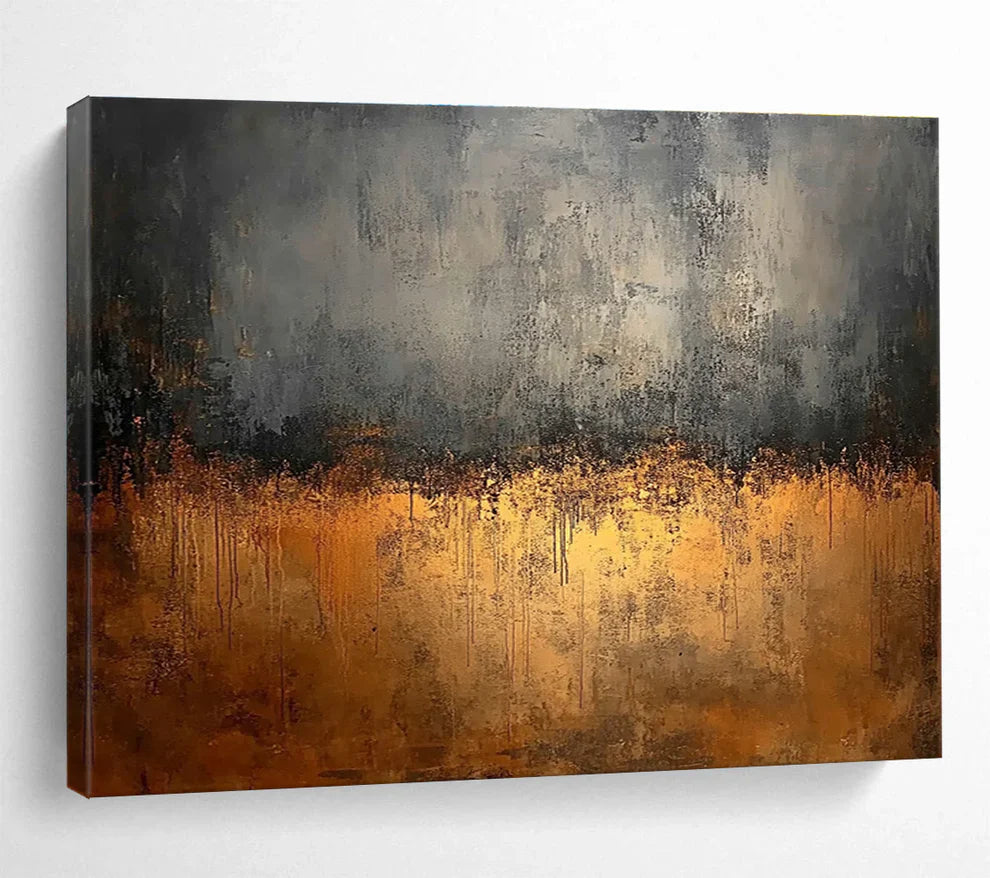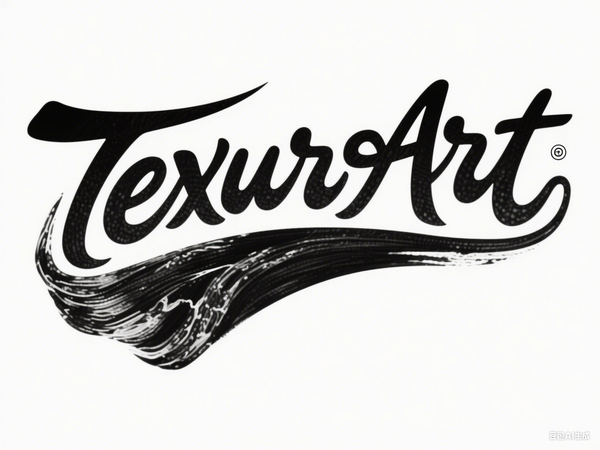
The Intersection of Light and Shadow - An Analysis of a Gray and Gold Abstract
Share
In the vast landscape of abstract art, some pieces stand out for their dramatic interplay of light and dark, creating a powerful emotional narrative without a single recognizable form. This painting, the Gray & Gold Drip Art for Industrial-Chic Home & Modern Art Gallery SC146, is a prime example of this captivating duality. It is a work that speaks in a language of texture and color, inviting contemplation on themes of contrast, emergence, and the passage of time. As a cornerstone piece within the collection of Gray Abstract Art, this artwork masterfully blends moody tones with luminous metallic elements.
The painting is a powerful study in contrast, divided horizontally into two distinct, yet connected, realms. The upper half is a field of deep, textured grays and blacks. The strokes are applied vertically, creating a sense of a heavy, rain-swept sky or a dense, foreboding curtain. The texture here is prominent, with layers of paint suggesting an old, weathered wall or a stormy cloud formation. The colors are somber and serious, evoking a feeling of gravity, mystery, and introspection. This section of the canvas feels like a memory of a dark and rainy day, or the quiet solitude of an industrial cityscape. The use of a gray and black palette is a classic technique in abstract art to focus on form and texture, as explored in the works of artists like Mark Rothko and Franz Kline. For more on the history of this approach, you can consult the rich archives of the Art Institute of Chicago.
The lower half of the painting is a breathtaking explosion of gold and bronze. This metallic field seems to emerge from the darkness above, as if a powerful light source is breaking through the clouds. The gold is not a flat, uniform color; it is a rich, multi-tonal surface with hints of orange, yellow, and a deep, coppery sheen. What makes this section truly compelling is the "drip art" technique. Streaks and rivulets of gold and brown paint fall from the central horizontal divide, bleeding into the lower field. These drips add a sense of motion and spontaneity, suggesting a melting or a transformative process. It's as if the darkness is being peeled away, revealing a luminous, precious layer beneath. The use of drip painting is a hallmark of action painting, a style made famous by Jackson Pollock. You can find more information about the history and philosophy of this technique on the Guggenheim's website.
The central point of the painting, where the gray and gold meet, is the emotional core of the work. It is a meeting point between shadow and light, a moment of transition and hope. The two fields are not separate but are in dialogue, with the darkness dripping into the light and the light attempting to break through the darkness. The painting is a visual metaphor for the human experience, a journey from moments of shadow to moments of profound, luminous beauty. The textured quality throughout the piece ensures that the artwork is a dynamic object, with the metallic gold catching the light and shimmering differently from every angle.

The Artist's Vision and Journey
The artist’s journey is a reflection of their fascination with the themes of transformation and contrast. Their work is not about depicting a scene but about capturing a feeling—the feeling of a break in the clouds, the moment of inspiration emerging from a state of creative block, or the light at the end of a tunnel. The artist's philosophy is that art should be an emotional experience, and that the physical qualities of paint—its texture, its density, its ability to drip and flow—are the most powerful tools for conveying that emotion.
The creative process is an act of intuitive expression. The artist begins with the dark, textured upper field, allowing the paint to be applied with a sense of gravity and weight. This is followed by the spontaneous application of the gold and the deliberate use of the drip technique. The drips are not random but are a form of controlled accident, a way of introducing an element of chance and unpredictability into the work, mirroring the unpredictability of life itself. The use of metallic paint is a signature element, a conscious choice to bring a sense of luxury and value to a more somber palette. This is a deliberate nod to historical art practices, where precious materials were often used to highlight important elements, as you can read more about on the Metropolitan Museum of Art's research page.
The artist's journey has evolved from more figurative works to a complete embrace of abstraction, finding that this form allows for a more direct and uninhibited emotional expression. This piece, with its powerful contrast and rich texture, is a perfect embodiment of that artistic evolution and philosophy.

Customer Reviews
"This painting is absolutely breathtaking. The gold is even more vibrant in person, and the texture gives the piece so much depth. It’s the perfect blend of industrial and elegant for my loft." - Daniel S.
"The contrast in this piece is stunning. It’s a very emotional and powerful painting that has become the centerpiece of my living room. I love the way the gold shimmers in the light." - Maria K.
"A truly unique and beautiful piece. The drip art style is so cool and the colors are a perfect mix of moody and bright. It feels like a high-end gallery piece." - Jonathan P.
Frequently Asked Questions (FAQ)
Q: Is this an original painting or a canvas print? A: This artwork is a high-quality reproduction of an original painting. The unique textures and dripping effect are meticulously recreated to provide a finished product that is visually and tactilely rich.
Q: How should I clean and care for this textured canvas? A: We recommend cleaning this painting by gently dusting it with a soft, dry cloth or a feather duster. Please do not use water, chemical cleaners, or abrasive materials, as they could damage the textured surface.
Q: Does the painting come with hanging hardware? A: Yes, all our canvases come with the necessary hardware pre-installed on the back, so it is ready to hang as soon as it arrives.
Q: Can this piece be hung in a high-humidity area like a bathroom? A: We do not recommend hanging this artwork in areas with high humidity, as it can potentially affect the canvas and the textured medium over time.
Q: What is the best way to light this painting to bring out the gold? A: The gold accents will shimmer beautifully under various light conditions. We recommend using a spotlight or an adjustable gallery light to highlight the metallic details and the canvas's texture.
